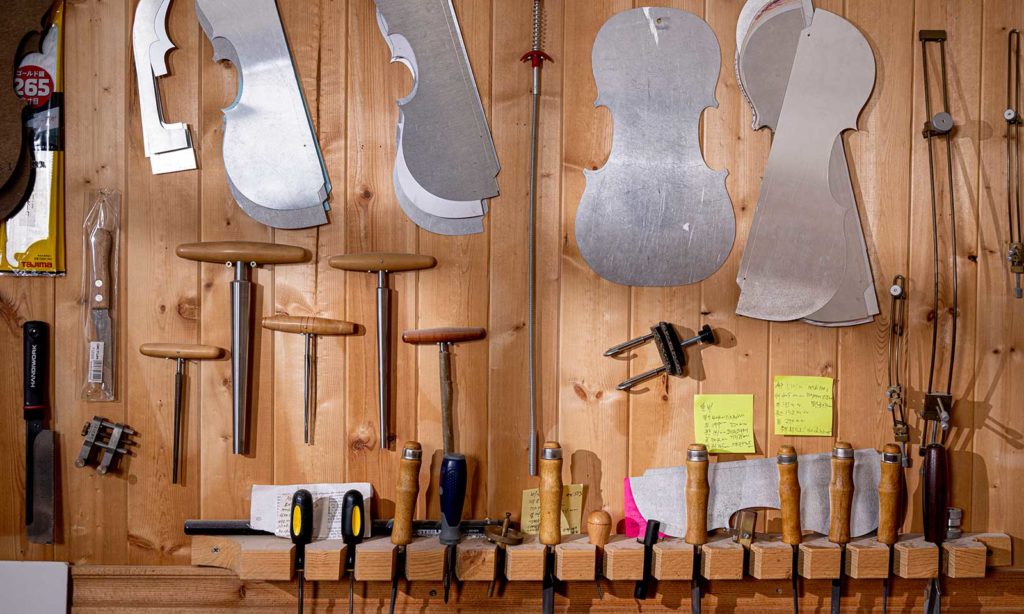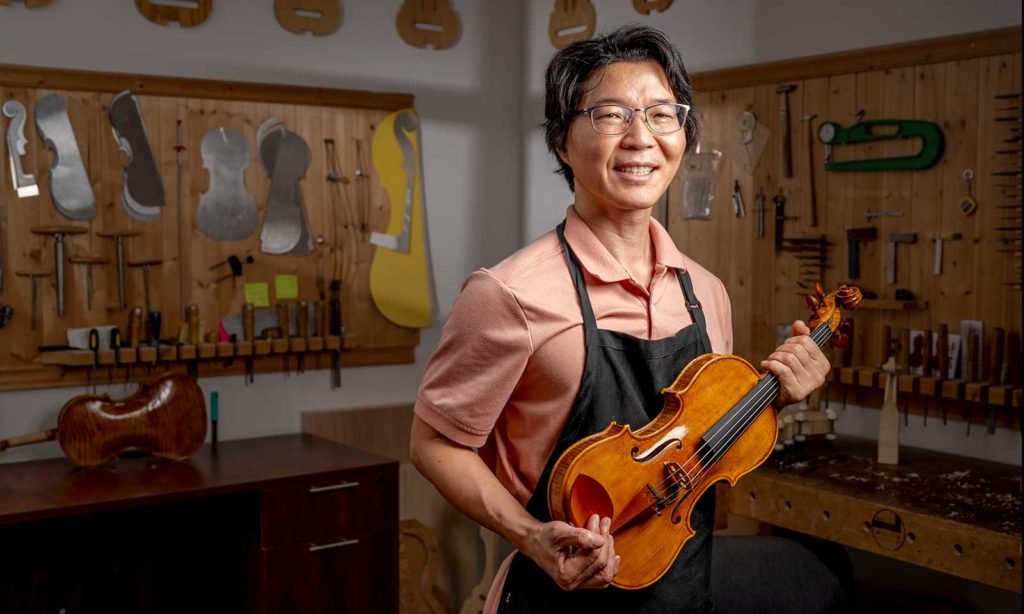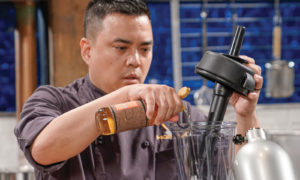Inside a 1,000-square-foot workshop on Irvine’s Technology Drive, gleaming glass cabinets display dozens of cellos, violas and violins.
These are the works of Okkyum Kim, 48, an award-winning string-instrument artist so exacting that he makes his own glue.
Kim spends two to three months – and sometimes up to a year – crafting each instrument, using tiny knives and sanders to carve and shape each part. He has customers from all over the world who pay thousands of dollars per instrument.
The South Korea-born artisan sounds almost mystical as he describes his passion for his work. “In order for an instrument to be made, a tree is cut down,” he says. “It may seem like the ending of a life; however, to me it is the birth of another life. Reborn life, as an instrument.”
A classical pianist as a teen, Kim met his first violin-maker, a friend of a friend, on a trip to Sydney in 1999. A visit to his workshop set Kim on his career path. “We are used to only seeing the finished instrument,” he recalls. “But seeing the parts of the unfinished instrument, that was phenomenal. I just lost my mind.”
A disappearing discipline
Violin-makers, known as luthiers, belong to a small, rarefied, and possibly vanishing group that has been wielding its art for more than 550 years, from the time that Andrea Amati, in Cremona, Italy, created the world’s first known four-string instrument for the French King Charles IX. In 1644, Antonio Stradivari, widely regarded as the most famous violin-maker of all time, was born in Cremona, and for subsequent centuries the cobblestoned city served as the global center of the industry.
In his late 20s, Kim spent a year preparing for the test to enter one of Cremona’s most prestigious luthier-training institutions: the Stradivari International Violin-Making School. Accepted in 2003, he studied there for the next three years.
Following his graduation, Kim stayed another year in Cremona, working in the celebrated Carlson & Neumann Workshop. Bruce Carlson, his mentor, was so esteemed that he was entrusted with the repair and maintenance of the Stradivari Museum collection. “He is one of the best experts,” Kim says. “I was very lucky to have worked for him.”
In 2006, Kim put his own skills to the test, earning a certificate of merit at the 17th International Competition of the Violin Society of America. But his greatest honor came in 2009, when he earned a bronze medal for one of his violas in Cremona’s International Triennale Violin Making Competition, known as the Olympics of violin-making. More than 330 violin-makers from nearly 30 countries participated.
Kim worked in a shop in Atlanta before starting out on his own in 2011 in Cerritos. He opened his first workshop in Irvine in 2013 and moved to his current location five years later.
In his shop, he holds out a violin, still a work in progress, to show off the deep hues of the wood of the back, side and neck: Bosnian maple, and spruce from Northern Italy.
He considers each piece both art and instrument. “It makes a sound, but we want to make beauty, too,” Kim says. “The sound is beauty, and the look, beauty.”










